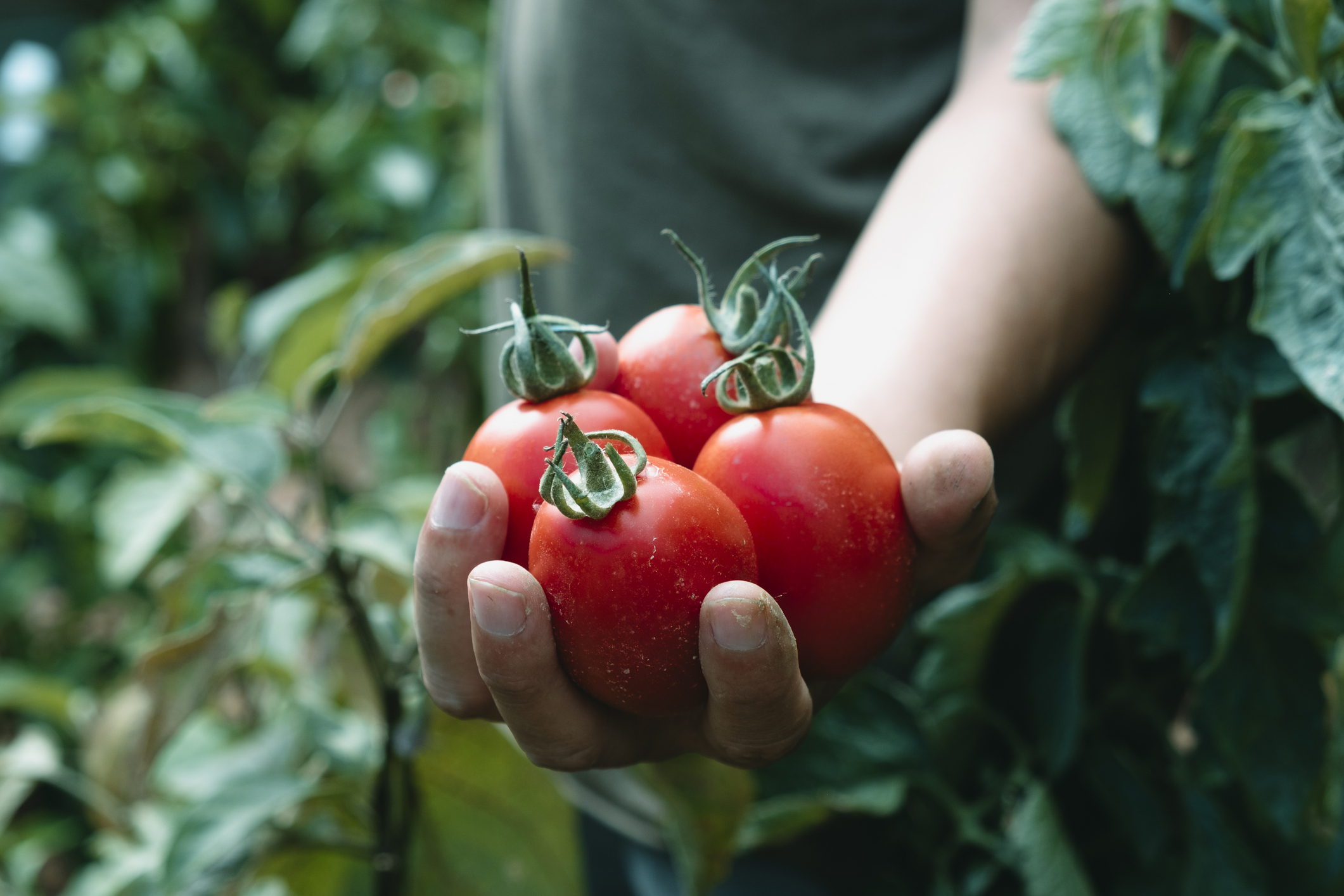As the warm rays of the sun envelop my garden, I am filled with anticipation for the bountiful tomato harvest that lies ahead. Growing tomatoes has become one of the most rewarding and cherished aspects of my homesteading journey. In this blog, I will share with you the secrets to cultivating the juiciest tomatoes, from selecting the perfect varieties to providing the ideal growing conditions.
Choosing the Right Tomato Varieties:
The first step in growing tomatoes is selecting the right varieties for your garden. With countless options to choose from, it’s important to consider factors such as climate, available space, and personal preferences. Determinate varieties, which grow to a fixed size and produce fruits within a specific timeframe, are great for smaller gardens or containers. Indeterminate varieties, on the other hand, are vining tomatoes that continue to grow and produce fruit throughout the season, requiring ample space and support.
Preparing the Soil:
Tomatoes thrive in well-drained soil rich in organic matter. Before planting, prepare the soil by loosening it with a garden fork or tiller, removing any weeds or debris. Incorporate compost or well-rotted manure to improve soil fertility and moisture retention. A pH level between 6.0 and 7.0 is ideal for tomatoes, ensuring optimal nutrient uptake.

Sowing or Transplanting:
Tomatoes can be started from seeds indoors or purchased as young transplants from nurseries. If starting from seeds, sow them indoors 6-8 weeks before the last frost date, ensuring a warm and well-lit environment. Transplants should be set in the garden after the danger of frost has passed and the soil has warmed up. When planting, dig a hole deep enough to bury the stem up to the first set of leaves, as buried stems will develop additional roots, enhancing plant strength and vigor.
Providing Ample Support:
Tomatoes are vine-like plants that benefit from sturdy support systems. Stake or cage your tomato plants to provide support as they grow taller and bear heavy fruit. Stakes should be firmly placed into the ground, approximately 6-8 inches away from the base of the plant. Alternatively, cages can be placed around the young plants, allowing them to grow within the confines of the cage. Proper support prevents the plants from sprawling on the ground, increases air circulation, and facilitates easier maintenance.
Watering and Mulching:
Tomatoes require consistent moisture, but overwatering can lead to root rot and other diseases. Water deeply, allowing the soil to dry slightly between watering sessions. Mulching around the base of the plants helps retain moisture, suppresses weeds, and maintains a more consistent soil temperature. Organic mulches such as straw or shredded leaves are excellent options for tomato plants.

Nourishing with Care:
Tomatoes are heavy feeders and require regular nourishment throughout the growing season. Start by incorporating a balanced organic fertilizer into the soil at planting time. As the plants develop, apply additional doses of fertilizer according to the package instructions, ensuring a proper balance of nutrients. Organic amendments such as compost or worm castings can also be added periodically to enrich the soil and promote overall plant health.
Pruning and Suckering:
To promote better airflow, prevent diseases, and redirect energy toward fruit production, pruning and suckering are crucial. Remove the suckers, which are the small side shoots that emerge from the junction between the stem and the main branches. This allows the plant to focus its energy on developing larger, healthier fruits. Prune any diseased or damaged foliage, as well as the lower leaves that may come into contact with the soil, to minimize the risk of fungal infections.
Pest and Disease Management:
While tomatoes are relatively resilient, they can fall prey to pests and diseases. Keep a close eye on your plants, regularly inspecting for signs of common tomato pests like aphids, hornworms, or whiteflies. Natural pest control methods such as companion planting, introducing beneficial insects, or using organic insecticidal soaps can help keep pest populations in check. Additionally, practicing crop rotation and maintaining good garden hygiene can help prevent soil-borne diseases.

Harvesting and Enjoying the Fruits of Your Labor:
The moment of truth arrives as your tomatoes transition from vibrant green to luscious red (or other ripe hues depending on the variety). Harvesting at the right time is key to enjoying the full flavor and texture of your homegrown tomatoes. Gently twist or cut the fruits from the vine when they are firm and fully colored. Remember, tomatoes continue to ripen after being picked, so allow them to reach their full flavor potential by placing them in a well-ventilated area at room temperature.
Growing your own tomatoes is an incredibly rewarding experience that connects you to the natural cycle of life. From seed to harvest, nurturing these plants with love and care rewards you with an abundance of delicious, sun-ripened tomatoes that surpass any store-bought variety. So, roll up your sleeves, dig your hands into the soil, and embark on this tomato-growing journey. Your taste buds will thank you, and the satisfaction of cultivating your own food will fill your heart with joy and contentment.





